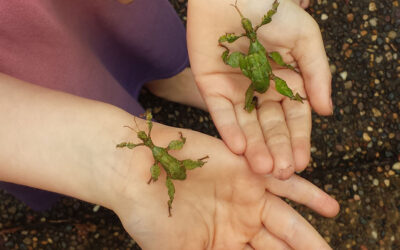Have you found teen porn on your child’s phone?
It’s one of the many fears parents have today. Despite your best efforts and strongest precautions, your child has encountered pornography. This is a digital challenge many parents face today. Even if kids aren’t actively looking for teen porn, there’s a possibility they can be exposed to it while doing research for a school project, playing games or visiting friends or family.
With ready internet access, more teens are seeking out, or stumbling upon, free pornographic websites. Porn raises real concerns about the impact such imagery can have on those viewing it. Although teens going through puberty might be curious about sex and want to explore sexual behaviour, consistent research outlines the detrimental effects exposure to teen porn is having on young people.
Recent research indicates more than 90 per cent of teenagers have internet access. Further, one of the top five websites accessed by adolescent males is Pornhub, a pornographic website with free material.
What harm this does to those viewing such pornographic material depends on both the content of that material and the reasons the teen is seeking it out. If the content is extreme or abusive, then exposure to such material can traumatise. Additionally, the risk of exposure to graphic, violent or misleading messages about sexual practices and gender stereotypes can give teens the wrong idea about sex and intimate relationships.
What also needs to be addressed is what might be ‘normalised’ by viewing such material. If someone is seeking pornography as a way of coping with stress or anxiety, then the seeking can become compulsive and problematic. Most likely, teens seeking such pornography are feeding curiosity triggered by peers or inadvertent clicking on online advertising. As a result, it is important to consider another source of potential harm: the fear of getting into trouble for viewing such material.
What parents and carers can do if their child finds porn
It can be confronting and emotional when you discover your child has been exposed to porn. Some parents report feeling shock, anger, betrayal and disbelief. If the child has accessed pornographic content unwillingly, parents often feel responsible. These feelings are all valid.
When your child has seen porn — accidentally or not — it’s important for you to know you’re not alone. According to a 2016 report from the United Kingdom, 22 per cent of online porn viewing among those under 18 years of age is done by children younger than 10!
For teens, it’s important that the message they need to understand most is that porn is not real life.
Use it as an opportunity to discuss sex and healthy relationships
Nothing can substitute for a parent engaging positively with their child’s sexual education. By allowing opportunities for open discourse and questioning in a non-judgmental way, a parent can build a safe place for their child to explore sex. This discussion only works from a position of openness and positivity. Negativity or doom-saying will simply drive teens to seek the answers to their questions elsewhere.
Talk about
- always seeking permission before touching, hugging or kissing another person (porn sometimes includes scenes that teaches the opposite)
- when someone says ‘no,’ your child should respect that response. And where your child says ‘no’ they should expect it to be heard and respected too
- disrespect, violence, and abuse are not okay
- pornography portraying scenes of violence and unrealistic expectations of sexual relationships. For example, sexual safety (using condoms etc.) is often missing from porn, it might teach that certain sexual practices (such as anal sex) are things everyone is into.
Teens often fail to recognise the importance of intimacy in a close relationship. Talk to your child about building trust and what it means to be emotionally close to someone. Find out what emotional closeness means to them and how they see it applying to their relationship.
Another thing you should talk about with your teen is body image and acceptance. The people appearing in porn images and videos do not represent the appearance of every person. You may need to discuss how images can be digitally altered, or bodies can be surgically enhanced.
2. Cyber education
Parents need to understand the technology they are allowing their teens to use. Know how to block sites, know how to install ‘nanny software’, know how to monitor (and take control if required) your child’s social media site, and know how to review an internet browser history.
Take the time to read through the material on the Government site www.esafety.gov.au because you cannot educate your teens about something if you don’t have the knowledge yourself.
3. Online trust building
Parents need to be clear about expectations and rules for internet and social media use. This needs to be discussed with the teens, as well as rules negotiated and consequences outlined.
However, the consequences in this context are not that of punishment but rather learning about trust. For example, the better we are at sticking to the rules, the more freedom and independence we have. If we break the rules, then our level of freedom and independence is reduced, and greater guidance and supervision provided until we can stick to the rules consistently again.
This ‘give a little’ / ‘take a little’ approach allows teens to feel like they have more control over their circumstances, which will help get them on board with the strategy and allows parents to guide their teens through the minefield of internet access.
Other things to do if your child finds porn online
If you discover your child has accessed pornographic material, then it is important to do a few things:
- Reassure your child that curiosity is okay. This situation needs to be seen as an opportunity to discuss sex and teen porn, and create a dialogue that can answer some of your child’s questions in a safe and healthy way.
- Discuss what was seen so that it can be put into perspective. Pornography is not reality, it is not how sexual relationships operate, and it is not an accurate representation of the average male or female body.
- Discuss why they ended up visiting a pornographic website. Curiosity, influence by peers, accidental clicking, malware or a virus, or influence by an older child or adult?
- Review the sites yourself if you can. It is important to know the extent of porn they’ve seen can vary significantly and can be traumatising to teens. This also informs your discussion and allows you to clearly identify the issues needing to be dealt with immediately.
- If your child has viewed sites involving child sexual abuse, you need to discuss this with police as a child may be in danger, or your child may have come into contact with a possible offender.
- Educate your child on age-appropriate sexuality. Visit www.true.org.au for detailed information on what is age appropriate or consult a psychologist, GP, or paediatrician.
Most importantly, if you don’t feel confident dealing with any of these issues or feel you need support visit a psychologist, GP, or paediatrician and seek advice.


